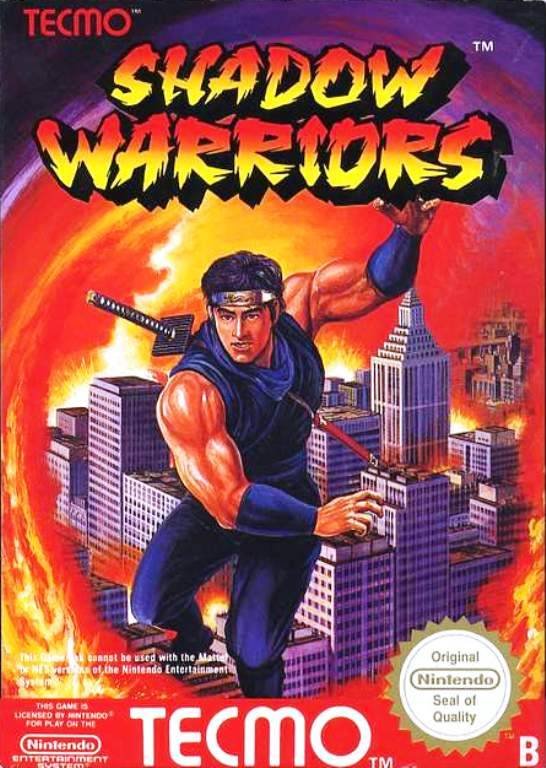
NINJA GAIDEN (SHADOW WARRIORS)
Ninja Gaiden, released for the NES in 1988 by Tecmo, stands as a quintessential masterpiece that showcases the artistic potential of 8-bit gaming. Renowned for its challenging gameplay and cinematic storytelling, Ninja Gaiden elevates the platforming genre through its meticulously crafted visuals, dynamic animations, and immersive environments, transforming each level into a vivid and engaging work of interactive art.
At the core of Ninja Gaiden’s artistic brilliance is its exceptional sprite work and character design. Ryu Hayabusa, the game’s protagonist, is depicted with striking clarity and fluid animations that convey his agility and lethal prowess. His movements—from swift sword slashes and acrobatic jumps to precise kicks—are rendered with remarkable smoothness, allowing players to feel every action and enhancing the connection to the character. The diverse array of enemies, each with unique designs and attack patterns, are meticulously crafted with bold silhouettes and vibrant colors. This diversity not only makes each encounter visually stimulating but also adds depth to the game’s aesthetic, ensuring that no two battles feel the same.
The game’s environments are a testament to thoughtful artistic direction and innovative design. Ninja Gaiden transports players through a variety of meticulously detailed locales, including ancient temples, dark forests, industrial factories, and eerie underground lairs. Each stage is adorned with rich, layered backgrounds that create a sense of depth and immersion. The use of a varied color palette enhances the visual diversity, with each area boasting its own unique set of hues that reflect the mood and theme of the location. From the serene blues and greens of outdoor scenes to the harsh reds and grays of enemy strongholds, the environments are crafted to evoke specific emotions and atmospheres, making each level a visually distinct and captivating experience.
Animation in Ninja Gaiden plays a crucial role in its artistic success. Despite the NES’s technical limitations, the game achieves remarkably smooth and responsive animations that bring the world to life. Ryu’s fluid combat moves, enemy attacks, and environmental interactions are depicted with precision, enhancing the sense of action and urgency that defines the game. The seamless transitions between different animations maintain the game’s pacing and visual coherence, ensuring that gameplay remains engaging and visually appealing throughout.
Visual storytelling is intricately woven into Ninja Gaiden’s design. Each level not only presents physical challenges but also conveys parts of Ryu’s quest to defeat the sinister organization responsible for his mentor’s death. Environmental cues, such as shattered statues, ominous shadows, and scattered remnants of past battles, provide narrative context without the need for extensive dialogue or text. These visual elements work harmoniously with the gameplay mechanics, creating a cohesive and immersive narrative experience that draws players deeper into the game’s world.
The audio design complements Ninja Gaiden’s visual artistry with its memorable and atmospheric soundtrack. Composed by Keiji Yamagishi, the music features a blend of traditional Japanese instruments and modern synth elements, creating a unique and evocative soundscape that enhances the game’s setting and mood. Sound effects, from the clash of swords to the roar of enemies, are crisply executed, reinforcing the visual actions and adding to the overall immersive quality of the game.
Moreover, Ninja Gaiden excels in its use of visual effects to enhance the artistic presentation. Particle effects, such as sparks from Ryu’s sword and explosive impacts from enemy attacks, add layers of detail and realism to the scenes. These effects are seamlessly integrated into the gameplay, elevating the visual appeal without distracting from the primary action. The strategic use of lighting and shadow further enhances the game’s atmospheric depth, creating a visually cohesive and engaging environment that captivates players.
In conclusion, Ninja Gaiden on the NES exemplifies how artistic vision and technical skill can converge to create a visually stunning and immersive gaming experience. Its detailed sprite work, rich and varied environments, smooth animations, and cohesive visual storytelling elevate it beyond a standard platformer, making it a beloved classic that continues to be celebrated for its artistic craftsmanship and enduring charm. Ninja Gaiden not only offers engaging and challenging gameplay but also stands as a remarkable piece of interactive art, showcasing the potential of 8-bit artistry to deliver epic and memorable adventures.

